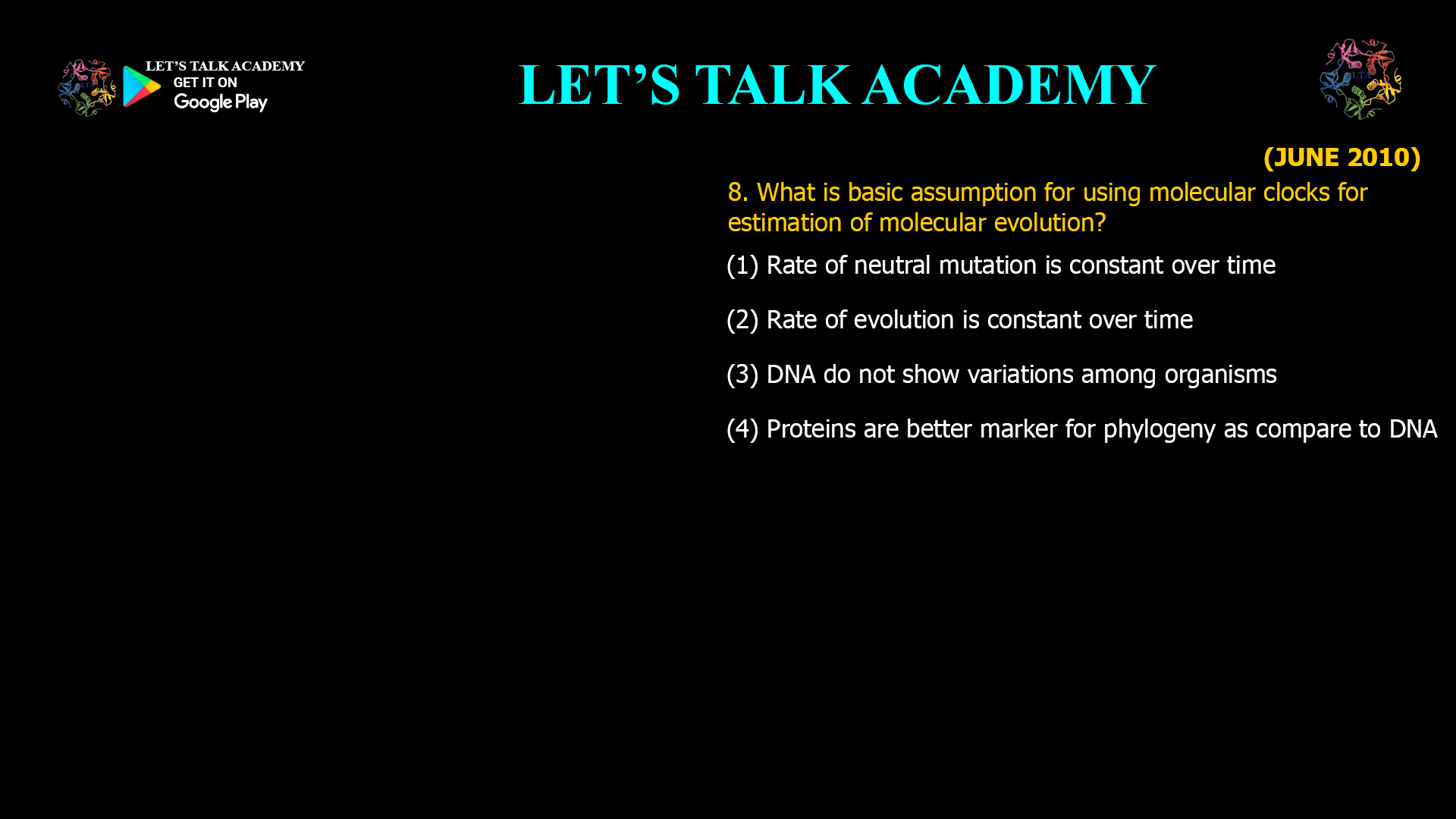- What is basic assumption for using molecular clocks for estimation of molecular evolution?
(1) Rate of neutral mutation is constant over time
(2) Rate of evolution is constant over time
(3) DNA do not show variations among organisms
(4) Proteins are better marker for phylogeny as compare to DNAWhat Is the Key Assumption Behind the Molecular Clock Hypothesis?
The molecular clock hypothesis has transformed evolutionary biology by providing a method to estimate when species diverged from common ancestors. But what is the fundamental assumption that makes this powerful tool possible?
The Molecular Clock Hypothesis Explained
The molecular clock hypothesis proposes that genetic mutations accumulate at a relatively constant rate over time in the DNA or protein sequences of organisms. By counting the number of differences between sequences, scientists can estimate the time since two species last shared a common ancestor123568.
The Core Assumption: Constant Rate of Neutral Mutation
The basic assumption underlying the use of molecular clocks is that the rate of neutral mutation is constant over time5678. This means:
-
Mutations, especially those that are neutral (not affecting fitness), occur at a predictable and steady pace.
-
The number of neutral mutations between two species is proportional to the time since they diverged.
-
This constancy allows genetic differences to be translated into evolutionary time, much like reading the ticks of a clock.
“The molecular clock hypothesis assumes that mutations accumulate on an organism’s genome at a constant rate over time…”4
Why Neutral Mutations?
Most molecular clock models focus on neutral mutations because they are not influenced by natural selection. Neutral mutations accumulate randomly and steadily, providing a reliable measure for estimating evolutionary timelines8.
Why Not Other Assumptions?
-
Rate of evolution is constant over time: This is too broad—evolution can be influenced by many factors, but the molecular clock specifically relies on the constancy of neutral mutation rates.
-
DNA does not show variations among organisms: This is incorrect; DNA variation is essential for the molecular clock to work.
-
Proteins are better markers than DNA: Both can be used, but this is not the core assumption of the molecular clock hypothesis.
Conclusion
The molecular clock hypothesis is built on the assumption that the rate of neutral mutation is constant over time. This principle allows scientists to use genetic data to reconstruct evolutionary histories and estimate divergence times across the tree of life.
Correct answer:
(1) Rate of neutral mutation is constant over time -



